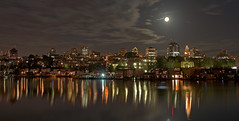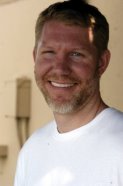everything was beautiful and nothing hurt
I'm re-reading Slaughterhouse Five...it's been many years. I'm about halfway through, and what's struck me right off the bat is how Jacob's Ladder, the early Tim Robbins film, bears striking resemblance to Vonnegut's novel. Specifically, Tim Robbin's character, like Billy Pilgrim, the main character in the novel, becomes "unstuck in time." (Robbins plays a Vietnam vet. In Slaughterhouse Five, Pilgrim is a veteran of World War Two). This theme can also be found Tim O'Brien's excellent collection of stories about Vietnam called The Things They Carried. Only in O'Brien'scase, he writes about himself as someone who shuttles willingly between past and present, deliberately blurring the line between memory and fact. What these stories share in common is a protagonist who has problems distinguishing what is real. What is real, as opposed to what is a dream (Jacob's Ladder), or what is a story (The Things They Carried), or what is the future (Slaughterhouse Five). Sure, it's easy to make the link between the chaos of war and protest art. But war and alternate realities has an equally venerable tradition which doesn't get nearly as much press (I should also point out Joseph Heller's Catch 22, which I've not read, would seem to also fit in this conversation).
You'd think that a book or movie which offers a disjointed view of reality,
which makes an effort to confuse the reader or viewer, is bound to be nihlishtic. Strangely enough, both Jacob's Ladder and The Things They Carried end on an affirmative note far from nihilism or despair. That is, perhaps, the most remarkable thing about these stories. Take The Things They Carried:
But this too is true: stories can save us. I'm forty-three years old, and a writer now, and even still, right here, I keep dreaming Linda alive. And Ted Lavender, too, and Kioa, and Curt Lemon, and a slim young man I killed, and an old man sprawled beside a pigpen, and several others whose bodies I once lifted and dumped into a truck. They're all dead. But in a story, which is a kind of dreaming, they dead sometimes smile and sit up and return to the world. (Tim O'Brien, The Things They Carried, Penguin: 1990, p. 255).


